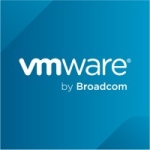In our organization, it was very common to create crisis rooms where we gathered experts from all areas to investigate an application problem by allegations of users about problems of slowness and errors. After we started using APM in our environment, we managed to reduce the creation of these rooms by 90%.
Currently, we have in our park 600 servers monitored with the APM, and we have on average 2000 applications still to be included in the monitoring. As our environment is very large and we support all of them with a team of about 20 people, we cannot verify all the logs looking for these errors. So, we set up rules in APM to warn us when the application starts to present errors, and we already interact directly with the development team to handle these errors. This is also true for the average response time. The tracers use the same ones when a more in-depth investigation of the problem is necessary to discover the exact point of the problems that we are investigating.
The creation of a report is an area with room for improvement.
The reports are a key part of APM in my vision because it is through them that we manage to generate the evidence to direct the development team and operational support to address. However, we can not extract the information of the tool through reports. We have needed several times to use screen print screen, CTRL + C and CTRL + V. I cannot change the font, color, size, bold or any text I put in the report, I cannot change the page size among other things.
We have vital information in the tool that we cannot extract as topology changes, application topology design, type-separated error relationship, and so on.
We did have stability problems in versions 10.1 and 9.7.
We had many problems of instability, but when we upgraded to version 10.5, these problems reduced drastically.
At this moment, we have not encountered any scalability issues.
Technical support is excellent. Whenever I needed support, I had an excellent service.
We did not previously use a different solution. We just did a PoC.
All settings have always been pretty simple.
Negotiate a lot, but do not forget to buy the product because it is worth it.
APM only worked here in the company because CA's after sales is very present here and acted as a true partner for us. I strongly recommend having someone from CA “together forever”, because at the beginning it was very difficult to understand what the tool was reporting.















Better than AppDynamics?